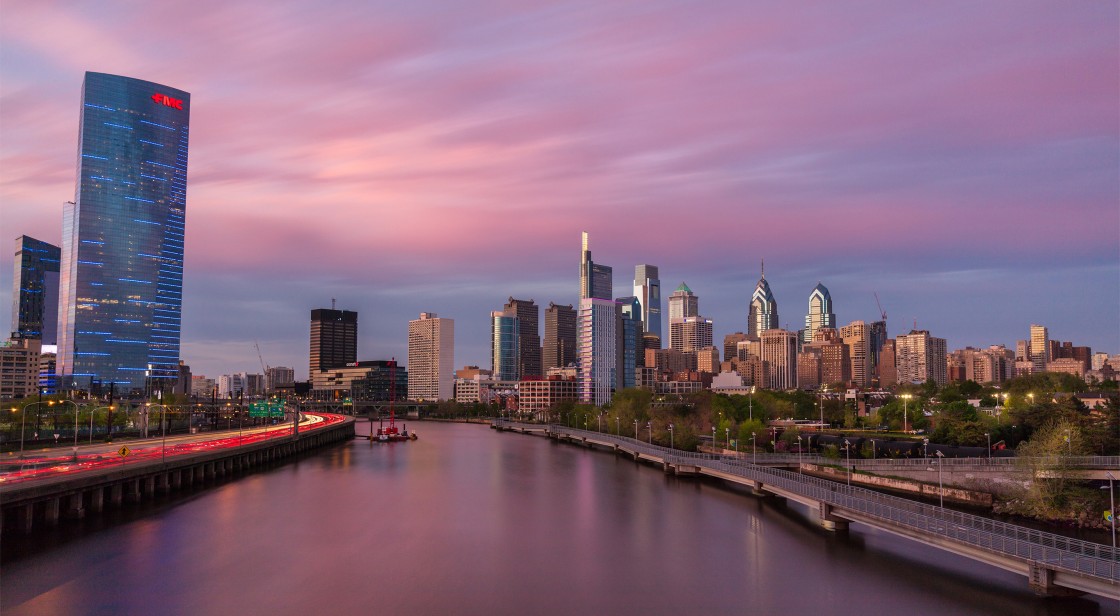Philadelphia-based law firm Obermayer assembled a panel of experts to discuss COVID-19’s continuing impact on the Philadelphia region’s real estate market. Real Estate Attorney Mike Malloy moderated the conversation amongst Anne Fadullon, Director of Planning and Development for the City of Philadelphia; Iola Harper, Deputy Commerce Director, Entrepreneurship and Economic Opportunity for the City of Philadelphia; Greg Reaves, Founder and Co-Owner of Mosaic Development Partners; and KSS Partner Petar Mattioni.
Spotlight on Social Change
The impact of systemic inequality came to the forefront several times throughout this discussion. Greg Reaves notes that this, in and of itself, is something relatively new in forums like these. While Greg and his business partner at Mosaic have always had conversations around inequality, they were much less common in settings like this panel or with outside partners prior to COVID and social unrest that has gained national attention over the past year. On that note, Iola Harper remarked, “We are going to come out of this incredibly changed, not just because of COVID but in large part because of the civic uprisings that have shown us the many inequities that have been suffered by people of color for many, many years. Having an eye on that will make us come out of this more informed, more willing to make changes, and more willing to adjust and tweak our systems.”
Intention is Essential for Equitable Growth
While Philadelphia has been touting its upward growth trajectory for years, Greg Reaves points to the frustration of the large community of people who have not been positively affected by this growth in any material way. After all, common solutions like affordable housing only go so far without equitable wages. For this reason, Mosaic makes intentional decisions to develop within neighborhoods and communities struggling with high unemployment and other systemic issues. Their goal is to find real solutions that can then be scaled up through projects like the Navy Yard redevelopment, for which Mosaic is a co-developer. Through this approach, Reaves hopes to avoid repeating systemic issues for the sake of growth. Anne Fadullon, the City of Philadelphia’s Director of Planning and Development, believes it is incumbent upon government to be intentional in helping to solve these problems. Given that many communities, particularly those of color, are untouched by Philadelphia’s growing real estate market, Fadullon rejects the adage that “rising tides lift all boats.” Rather, “these boats will not rise unless we intentionally make investments that cause those boats to rise. It can’t be a side effect; it has to be intentional.”
Localized Presence Yields Resilience
Petar Mattioni added a design and planning perspective to the conversation, speaking to KSS’ body of work at the University of Pennsylvania as it relates to evolving educational models and institutional resilience. Through projects like Pennovation Center and the newly completed Tangen Hall, Penn is investing in learning models focused on experiential learning, applied research, and entrepreneurship to educate the next generation of innovative thinkers and doers who will enter a workforce increasingly reliant on technology and automation.
Penn’s investment in Philadelphia speaks to a larger trend of greater localized presence—less reliance on global models and more reliance within our neighborhoods. Petar notes, “Whether at Pennovation or the Navy Yard, there is clear evidence that investment locally within the urban fabric of the city will improve our immediate resilience.”
Redeveloping Industrial Sites
On the topic of investing in the urban fabric of Philadelphia, Petar brought attention to the city’s significant building stock of former industrial buildings with tremendous potential for redevelopment. These buildings offer developers the opportunity to reenergize existing buildings, many of which are located within communities. Leveraging new industrial/distribution and educational models within these redevelopments can contribute to building vibrant, sustainable communities. Pennovation Center—the adaptive reuse of a former DuPont industrial site—is one example in which a defunct building was transformed into a thriving ecosystem supporting local entrepreneurship and innovation.
What’s Next?
To wrap up the session, Mike Malloy asked each panelist for a brief prediction of what the next six months to a year will look like for the real estate market in Philadelphia. Here is a snapshot of their responses:
- Iola Harper – Commercial corridors are well-positioned to leverage opportunities of work-from-home by meeting the everyday needs of nearby residents. Iola asserts “Opportunities exist on corridors…if you don’t have a business on a corridor, negotiate a lease for that vacant property!”
- Petar Mattioni – Aligned with increased local presence yielding greater resilience, we are seeing increased industrial and education investment. Petar hopes that “as a design community, we can leverage our knowledge across markets to repurpose sites into places that support local workforce and fuel more progressive educational models such as Pennovation and the Venture Lab at Tangen Hall.”
- Anne Fadullon – With the “cat out of the bag” on remote work, the opportunity for Philadelphia is how the city handles that reality moving forward. According to Anne, “If more and more people can do their work from anywhere, how do we make sure they choose Philadelphia?…How do we take advantage of what we have and maximize it?”
- Greg Reaves – Furthering Anne’s point above, when the most talented people think about work, the most important thing to them is ‘live’ and ‘play’ because they can work anywhere. As a result, Greg says “Philadelphia is going to have to become the place to live and play.”
Click here to watch the full recording of this dynamic discussion!

